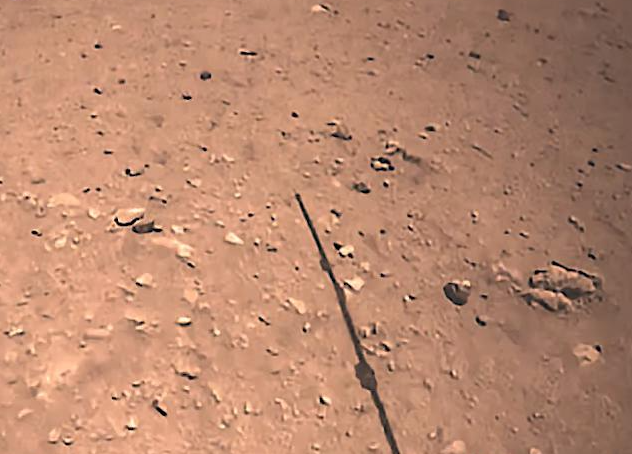Despite my comments about the sky not always being red, I think there is a simpler explanation.
This video was made by a "content" company on a monetized YouTube channel. The screenshot is simply a colorized version of a black and white image
Note that the notes below the video do not provide the source of the images. You can't check the source of their data, they offer it only in the form they want you to see.
from the "Front Obstacle Avoidance Cam B" shown later between about 00:39 and 00:43 in the video.
In both the sky and the ground,Edit: The original color analysis I had here is not conclusive as @Ruslan points out so I'll replace it. It's still viewable in the three colors track each otheredit history. There is color pixel noise generated when converted from some online image to a MPEG and then back to JPEG and then PNGInstead, but basically they converted the gray scale to "bluish" inwhile not conclusive I'll compare a cropped bit of Ruslan's suggested PIA19070 with a cropped bit of the sky and "redish" on(likely) colorized image screenshot from the ground via photoshop or similarvideo.
import numpy as np
import matplotlib.pyplot as plt
img = plt.imread('pEGAp.png')[..., :3]
print(img.shape)
r, g, b = img.reshape(-1, 3).T
fig, (ax1, ax2, ax3) = plt.subplots(3, 1)
ax1.scatter(r[::100], g[::100], s=1, c='black')
ax1.set_xlabel('red')
ax1.set_ylabel('green')
ax2.scatter(r[::100], b[::100], s=1, c='black')
ax2.set_xlabel('red')
ax2.set_ylabel('blue')
ax3.scatter(g[::100], b[::100], s=1, c='black')
ax3.set_xlabel('green')
ax3.set_ylabel('blue')
plt.show()



